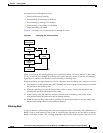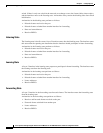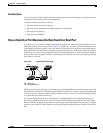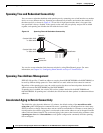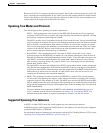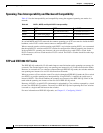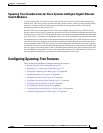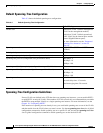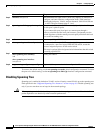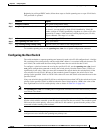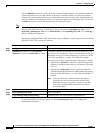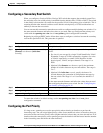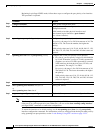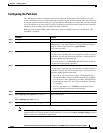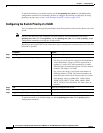
9-13
Cisco Systems Intelligent Gigabit Ethernet Switch Modules for the IBM BladeCenter, Software Configuration Guide
24R9746
Chapter 9 Configuring STP
Configuring Spanning-Tree Features
Caution Switches that are not running spanning tree still forward received BPDUs so that the other switches on
the VLAN with a running spanning-tree instance can break loops. Therefore, spanning tree must be
running on enough switches to break all the loops in the network. For example, at least one switch on
each loop in the VLAN must be running spanning tree. It is not absolutely necessary to run spanning tree
on all switches in the VLAN; however, if you are running spanning tree only on a minimal set of
switches, an incautious change to the network that introduces another loop into the VLAN can result in
a broadcast storm.
Note If you have already used all available spanning-tree instances on your switch, adding another VLAN
anywhere in the VTP domain creates a VLAN that is not running spanning tree on that switch. If you
have the default allowed list on the trunk ports of that switch, the new VLAN is carried on all trunk ports.
Depending on the topology of the network, this could create a loop in the new VLAN that will not be
broken, particularly if there are several adjacent switches that have all run out of spanning-tree instances.
You can prevent this possibility by setting up allowed lists on the trunk ports of switches that have used
up their allocation of spanning-tree instances. Setting up allowed lists is not necessary in many cases and
can make it more labor-intensive to add another VLAN to the network.
Spanning-tree commands determine the configuration of VLAN spanning-tree instances. You create a
spanning-tree instance when you assign an interface to a VLAN. The spanning-tree instance is removed
when the last interface is moved to another VLAN. You can configure switch and port parameters before
a spanning-tree instance is created; these parameters are applied when the spanning-tree instance is
created.
The switch supports PVST+, rapid PVST+, and MSTP, but only one version can be active at any time.
(For example, all VLANs run PVST+, all VLANs run rapid PVST+, or all VLANs run MSTP.) For
information about the different spanning-tree modes and how they interoperate, see the “Spanning-Tree
Interoperability and Backward Compatibility” section on page 9-10.
For configuration guidelines about UplinkFast and BackboneFast, see the “Optional Spanning-Tree
Configuration Guidelines” section on page 11-10.
Changing the Spanning-Tree Mode
The switch supports three spanning-tree modes: PVST+, rapid PVST+, or MSTP. By default, the switch
runs the PVST+ protocol.
Beginning in privileged EXEC mode, follow these steps to change the spanning-tree mode. If you want
to enable a mode that is different from the default mode, this procedure is required.
Command Purpose
Step 1
configure terminal Enter global configuration mode.
Step 2
spanning-tree mode {pvst | mst |
rapid-pvst}
Configure a spanning-tree mode.
• Select pvst to enable PVST+ (the default setting).
• Select mst to enable MSTP (and RSTP). For more configuration
steps, see Chapter 10, “Configuring MSTP.”
• Select rapid-pvst to enable rapid PVST+.



